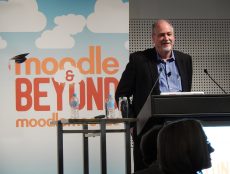
Articles
Editor’s Picks
Higher Education
Industry News
Interviews
Textbook Subscriptions Are Making Huge Inroads, But It Will Be Some Time Before They Dominate the Market
By Henry Kronk
March 19, 2019
One year ago, it was clear that the higher education textbook publishing market was not working for students. Student PIRGs, a coalition of college independent research groups, reported that, since 2006, the cost of textbooks had risen at four times the rate of inflation. With professors choosing the text and students paying for it, publishers held huge pricing power. But in the past few years, a tipping point has occurred. Student PIRGs found in 2014 that 65% of students weren’t buying all the required course material because the cost was so high. While OER provided an alternative, it remains imperfect. Two companies—the incumbent Cengage, and the recently transformed FlatWorld—believed they had a solution: textbook subscriptions.
In August of last year, Cengage launched their Unlimited service, a Netflix for textbooks that opened up their entire digital catalogue of 24,000+ titles along with numerous other services from Chegg, Kaplan, and Quizlet to users. Subscriptions start at $119.99 for one semester of access and print copies are also available with the subscription at reduced prices. In February during their Q3 investors call, the publisher announced it had surpassed 1 million users in a period of just 7 months.
“One area where we’re still pushing very hard is the general awareness of the product among students,” said Cengage CEO Michael Hansen. “If you go on a campus today and you ask a student, ‘Do you know what Cengage Unlimited is?’ Most say, ‘I think I know what that Unlimited thing is, but who the hell is Cengage?’ Only about 34%-35% of students actually know about us.”
FlatWorld, meanwhile, began a soft rollout of their department- and institution-level subscription in the fall of 2017. “We used to call it FlatWorld Unlimited,” said company CEO Alastair Adam. “I’ll tell you we got to that Unlimited name first. Obviously that’s now been used by others in the industry and has led to some confusion. There were some differences in marketing budgets as well.”
Now known as FlatWorld Institutional, the service targets professors and administrators. “I think it’s going to be another flavor,” Adam said. “It’s not going to be for everybody. There are some people who want to marshal their budget at the institutional level and bake that into their fees or their overhead. There are some who want to get what is in essence a volume discount, but the student will still pay. The transaction will be at the student level. There will be that healthy mix going forward. We’re agnostic; we don’t mind.”
While the two publishers offer a nominally similar service, they arrived at subscriptions from nearly opposite ends of the textbook market. With an annual revenue of $1.46 billion in FY 2018, Cengage is one of the largest academic publishers in the world.
FlatWorld, meanwhile, has gone through a series of iterations. Founded in 2007, the company transitioned to an OER model in 2009. Alastair Adam and John Eielson acquired the company in 2016 and returned it to a traditional publisher, but priced their books at much lower costs compared to the incumbents, betting that a more affordable textbook would lead to higher buy-through rates among students.
How the Textbook Subscriptions Have Panned Out
With at least one semester of subscription offerings in the rearview, both publishers have found success and interest in the new model.
In their Q3 report, Cengage said they had brought in $94 million in revenue from Unlimited. That’s significant, and Hansen believes it will grow to a large amount of their higher ed business, which he expects will bring in a revenue of $600 million to $650 million this year.
“It’s a significant part of our business,” Hansen said. “It’s not yet the overwhelming part, but given the trajectory we are seeing and the awareness that is increasing, we would expect this to grow strongly and, ultimately, become the biggest part of our total business.”
Cengage notably managed to make inroads into their competitors’ business, gaining 28% more adoptions from competitors than the previous year.

In contrast, Adam estimates that FlatWorld Institutional has grown to make up roughly 15%-20% of their total revenue. (As a private business, FlatWorld does not disclose detailed financial data.)
“I think this will be the case for the foreseeable future,” Adam said. “The majority will still be the single professors deciding with the students making the purchase.”
As one might expect, Adam takes a somewhat cynical view of textbook subscription services from the major publishers.
“I think the incumbents would love us to all switch to a subscription model,” he said. “Because then they’re back in the top position. They can resume increasing prices above inflation every year. I think professors by definition are pretty smart people and they are apprehensive about allowing that to happen. I think that there is the very important component of academic choice—that the professor is free to choose what textbook they want to teach to. Clearly, in a school, a lot of people in a department also see some benefit to everyone in the department teaching with the same textbooks. It makes it easier for everybody. So I think there will always be that tension there, but I don’t see the whole industry moving to a subscription model, at least not rapidly.”
Hansen, however, stresses that “the times when students did not matter are over. I want to be really emphatic on that. This industry relied for too long on the notion that, ‘if I can convince the professor, I don’t need to worry about the student, and I can charge whatever I want.’ I think these times are over and they’re over for good. The market is so transparent now that the student can find alternatives at any given point. The real challenge for any provider in the market, frankly—it doesn’t matter if this is a publisher or a provider of tutoring services—is you’ve got to show value for money. If you can’t show value for money to the student, the student will opt to do things that won’t create any revenue for you. They will walk away from you and they have plenty of choices to do that.
“This Back to the Future scenario where people say, ‘Oh, we can just continue to raise prices for students’—I would argue it hasn’t worked in the past five years, and it’s not going to work in the future. There are just too many choices available.”
Market Channels and the ‘Digital Refresh Cycle’
Adam, meanwhile, believes that, while textbook subscription models won’t take over the industry, the means by which learners purchase them will continue to shift.
“I think there’s a danger in conflating the product model with the channel [through which it reaches the consumer]. I do think you will see continual shift in channels. I think the days where the bookstore can take a product, mark it up by 33%, and sell it on to the student are under increasing pressure because you have to ask where value is being added, particularly where there’s a heavier and heavier digital volume in that process. There are analogies that I’ve heard to the airline industry and travel agents, right? Quite quickly it went from an industry where travel agents were integral to booking your travel to one in which they still provided value, but only in special situations. The majority of the market moved to book with the airlines. I do think you will begin to see more and more purchase activity go direct to the publisher rather than through a third party channel.”
“But again, I don’t think those channels will go away over night. The question is what level in decline in volume actually under mine the brick and mortar of those businesses. And you’ve seen them increasingly invest in t-shirts and mugs and so on.
“The second point I’ll make relates to this digital world and the refresh cycle and how quickly books will become outdated. I think that’s going to be topic specific. We have an American government book we just came out with. With the digital publishing process of the platform and the workflow that we have, we were able to include everything from the midterm elections and the Kavanaugh confirmations and so on in the book just as it was going live. That’s clearly super valuable to somebody teaching that course. That will impact revision cycles both faster and slower. It’s almost like software releases in terms of books.”
With the ongoing trend of textbook publishers providing more and more educational services, Hansen also spoke about the potential of an ‘Amazonification’ of the industry. “There is actually a real-life example, and the real-life example failed miserably,” Hansen said. “And the real-life example is called Pearson. Pearson essentially went on a spending spree and acquired all kinds of companies in the education ecosystem. They acquired online program management companies, they acquired language schools in China, and so on and so forth. They went on a roughly $6 billion spending spree to create this supermarket to serve all aspects of education. If you ask anybody today, I think most would say this effort failed. They are starting to sell pieces of it, they just sold their K-12 [courseware] business, and they have not done that well in the past five years as a result of that strategy.
“There are examples like Amazon and Google, and I think citizens should be concerned about the role these companies play in our daily lives, but I think the education industry is lightyears away from this reality. The education market is still suffering from an enormous amount of fragmentation. Just think through the eyes of a student. Let’s say she is a freshman and she comes to campus and has to take five courses in her first semester. The user experience is completely fragmented. In other words, you start with an LMS. So you go on the LMS and figure out which courses you’re enrolled in. Then you go into a class, let’s say Introduction to Accounting. The interface is completely different. The content is obviously different, but also the way I submit homework. Then I go to Introduction to Pyschology. Maybe there’s no homework and the interface is different again. I think we’re about 1 million years away from the levels of integration seen in other regions of the tech sector.”
Featured Image: Sylvia Yang, Unsplash.









[…] so that you can better improve your prospects. Or maybe it is to think about doing an online course while you are still working your job. This could give you the opportunity for better prospects and […]